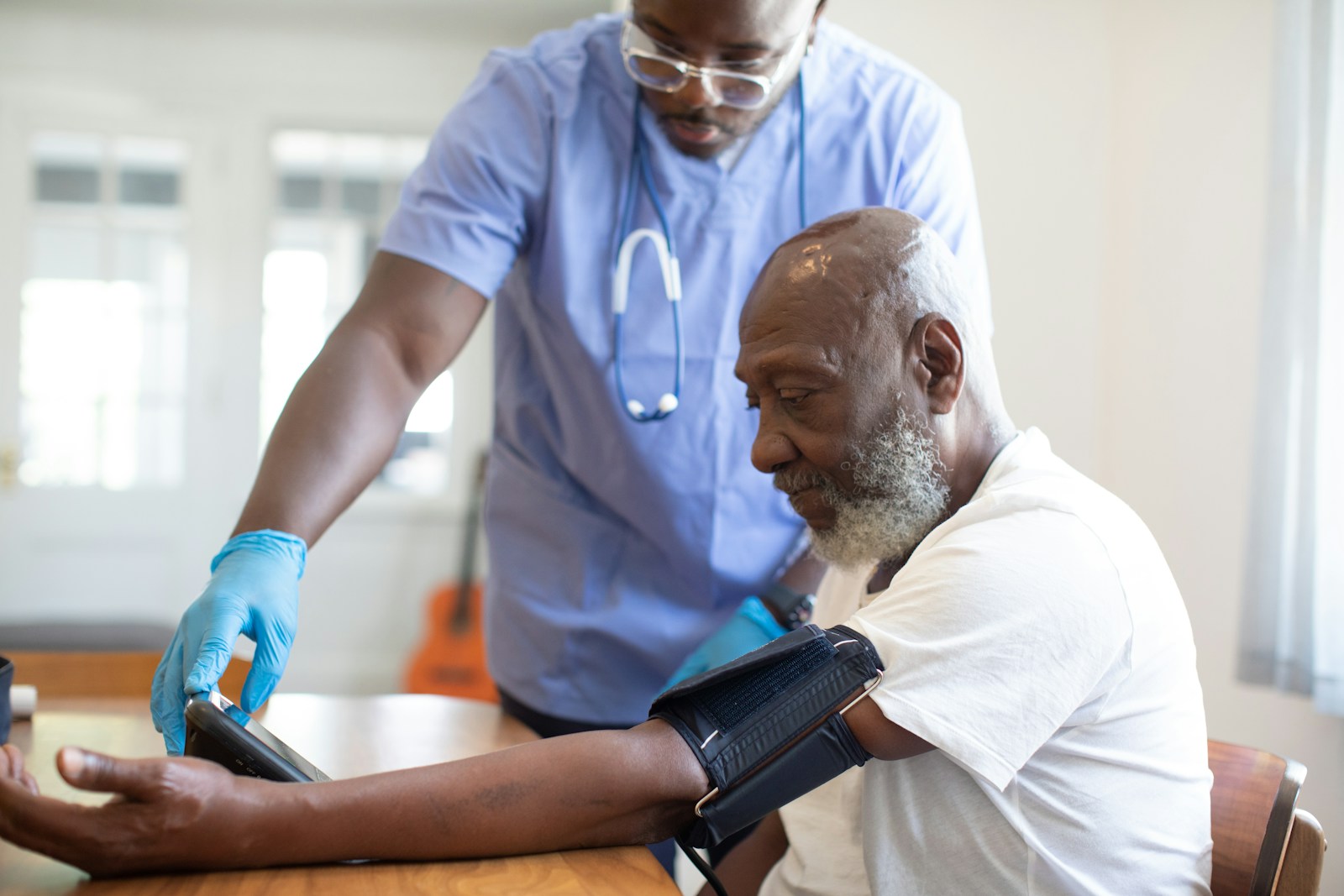The transformation from international healthcare student to practicing professional in the United States represents one of the most challenging yet rewarding journeys in modern immigration. Healthcare graduates holding F-1 student visas face unique opportunities and obstacles as they navigate the complex transition to employment-based visa status, balancing academic achievements with immigration requirements, professional licensing demands, and the urgent healthcare workforce needs of American medical facilities, hospitals, and clinical practices.
For thousands of international students completing degrees in nursing, medicine, pharmacy, physical therapy, and allied health professions, the pathway from student status to authorized healthcare employment requires careful orchestration of multiple moving parts. The intersection of immigration law, healthcare regulations, and professional licensing creates a labyrinth of requirements that demands strategic planning beginning well before graduation. Understanding the available visa options, timeline constraints, and strategic considerations can mean the difference between seamless career launches and devastating gaps in legal status that derail promising healthcare careers.
The American healthcare system’s growing dependence on international talent has created both opportunities and complexities for foreign healthcare graduates. While hospitals and medical facilities actively recruit international graduates to address critical staffing shortages, particularly in underserved specialties and geographic regions, the immigration pathways available to these graduates have not kept pace with workforce demands. This disconnect between healthcare industry needs and immigration policy realities shapes the experiences of every international healthcare student contemplating a professional future in the United States.
Understanding Your Current Student Visa Status and Rights
International healthcare students typically enter the United States on F-1 visas, which provide authorization to pursue academic programs at accredited institutions while maintaining strict compliance with enrollment requirements and work restrictions. The F-1 status forms the foundation from which all future immigration transitions must build, making it crucial for healthcare students to maintain impeccable status throughout their academic programs. Any violations, including unauthorized employment, failure to maintain full-time enrollment, or exceeding approved vacation periods, can have catastrophic consequences for future work visa applications.
The F-1 visa permits limited employment opportunities through Curricular Practical Training during academic programs and Optional Practical Training after graduation, both of which prove invaluable for healthcare students seeking to gain American clinical experience. CPT allows students to participate in internships, clinical rotations, and externships that form integral parts of healthcare education programs. These experiences not only fulfill degree requirements but also establish crucial professional connections and demonstrate competency in American healthcare settings, factors that significantly influence future employment prospects and visa sponsorship opportunities.
Healthcare programs often require extensive clinical training that must be carefully structured to comply with F-1 regulations while meeting accreditation standards. Medical students completing required clinical rotations, nursing students participating in hospital-based training, and pharmacy students fulfilling experiential learning requirements must ensure their practical training qualifies as CPT and receives proper authorization from designated school officials. Documentation of this training becomes essential evidence for future visa applications, demonstrating both educational completion and hands-on experience in American healthcare environments.
The maintenance of F-1 status extends beyond academic requirements to encompass financial documentation, address reporting, and travel considerations that can impact future visa transitions. Healthcare students must demonstrate continued financial support throughout their programs, as inability to maintain financial resources can lead to status violations that complicate employment-based visa applications. International travel during academic programs requires valid visa stamps and travel signatures, with any disruptions potentially affecting the continuity of status necessary for certain work visa pathways.
Optional Practical Training: Your Bridge to Employment Authorization
Optional Practical Training represents the most critical bridge between F-1 student status and employment-based work authorization for healthcare graduates. The standard twelve-month OPT period available to all F-1 graduates provides immediate work authorization that allows healthcare professionals to begin their careers while employers initiate more permanent visa solutions. For healthcare graduates, this period often coincides with residency training, fellowship programs, or initial employment in hospitals and clinical settings actively recruiting international talent.
The OPT application process requires precise timing and meticulous attention to regulatory requirements, particularly for healthcare students whose graduation dates may not align with traditional academic calendars. Applications must be received by USCIS within specific windows related to program completion, with any errors or delays potentially resulting in gaps between graduation and work authorization. Healthcare students should initiate OPT applications several months before graduation, coordinating with international student advisors to ensure all documentation meets current USCIS standards and processing timeframes.
STEM OPT extensions provide an additional twenty-four months of work authorization for graduates of qualifying healthcare programs, though not all healthcare fields qualify for this valuable extension. While traditional medical and nursing degrees may not meet STEM designation requirements, many healthcare-related programs including biomedical engineering, health informatics, clinical laboratory science, and certain public health specializations qualify for extended OPT periods. This additional time proves invaluable for completing residency training, pursuing board certifications, or allowing employers multiple attempts at H-1B lottery submissions.
The employment reporting requirements during OPT demand careful attention from healthcare professionals who may work irregular schedules or rotate through multiple training sites. All employment changes, including transitions between hospital departments, changes in residency programs, or modifications to training schedules, must be reported through the SEVP portal within specified timeframes. Failure to maintain proper reporting can jeopardize both current work authorization and future visa applications, making compliance systems essential for healthcare professionals navigating complex training environments.
H-1B Visa Pathway: Opportunities and Challenges for Healthcare Professionals
The H-1B visa category serves as the primary employment-based visa option for many healthcare graduates, though its application to healthcare professions varies significantly by specialty and employer type. Physicians, pharmacists, medical researchers, and healthcare administrators often qualify for H-1B classification, while registered nurses face unique challenges due to historical interpretations of specialty occupation requirements. Understanding these profession-specific nuances helps healthcare graduates and their employers develop appropriate visa strategies aligned with regulatory realities.
The annual H-1B lottery system creates particular challenges for healthcare graduates whose patient care responsibilities cannot accommodate employment gaps or uncertainty. With selection rates hovering around 30-40 percent in recent years, healthcare professionals must develop contingency plans addressing potential non-selection scenarios. Many teaching hospitals and academic medical centers utilize cap-exempt H-1B petitions that bypass the lottery system, providing more reliable pathways for physicians completing residency training or pursuing academic medicine careers.
Prevailing wage requirements for H-1B petitions in healthcare fields often exceed entry-level salaries, particularly in metropolitan areas with high costs of living. Healthcare employers must commit to paying wages that meet or exceed Department of Labor determinations based on education, experience, and geographic location. For new healthcare graduates with limited experience, this can create barriers to sponsorship, especially in smaller practices or community health centers with limited financial resources. Understanding prevailing wage dynamics helps international healthcare graduates target appropriate employers and negotiate realistic compensation packages.
The specialty occupation requirement for H-1B eligibility requires careful documentation of how specific healthcare positions require specialized knowledge typically associated with bachelor’s or higher degrees. While physicians and pharmacists easily meet this standard, other healthcare professionals may need comprehensive documentation demonstrating their roles’ complexity and educational requirements. Physical therapists, occupational therapists, and clinical specialists must often provide detailed position descriptions, organizational charts, and expert opinions establishing their positions’ professional nature and specialized knowledge requirements.
Alternative Visa Pathways for Healthcare Graduates
The J-1 visa program offers important alternatives for healthcare graduates, particularly physicians pursuing graduate medical education in residency and fellowship programs. The Educational Commission for Foreign Medical Graduates sponsors J-1 visas for international medical graduates matching into U.S. residency programs, providing a streamlined pathway that bypasses H-1B lottery uncertainties. However, J-1 physicians face two-year home residency requirements upon training completion unless they obtain waivers through Conrad 30 programs or other waiver pathways serving underserved populations.
O-1 visas for individuals with extraordinary ability provide options for healthcare graduates with exceptional achievements, research publications, or recognized expertise in specialized fields. While typically requiring several years of professional accomplishment, some healthcare graduates with significant research backgrounds, published works, or innovations in medical technology may qualify for O-1 classification immediately after graduation. This pathway particularly benefits physician-scientists, healthcare innovators, and specialists with unique expertise addressing critical healthcare challenges.
Employment-based green card categories allow certain healthcare graduates to bypass temporary work visas entirely, proceeding directly to permanent residency applications. Nurses and physical therapists benefit from Schedule A designations that expedite green card processing, while physicians completing J-1 waiver obligations may pursue permanent residency through employer sponsorship. Advanced degree holders in healthcare fields may qualify for EB-2 classification, particularly when their work serves the national interest through addressing healthcare disparities or advancing medical knowledge.
TN visas under the United States-Mexico-Canada Agreement provide streamlined work authorization for Canadian and Mexican healthcare professionals in specified occupations. Registered nurses, pharmacists, medical technologists, and certain therapists from Canada and Mexico can obtain TN status at borders or airports without numerical limitations or lottery systems. This pathway offers particular advantages for healthcare graduates who obtained degrees from American universities but hold Canadian or Mexican citizenship, allowing immediate employment authorization with minimal processing delays.
Professional Licensing Requirements and Timeline Considerations
The parallel processes of obtaining professional healthcare licenses and work visa authorization create complex timeline challenges requiring careful coordination and strategic planning. Most healthcare professions require passing national or state-specific examinations, completing supervised clinical hours, and meeting educational requirements that may vary significantly from international training standards. These licensing requirements must be satisfied regardless of immigration status, but work authorization is necessary to legally practice and receive compensation for healthcare services.
International nursing graduates face particularly complex licensing pathways involving multiple examinations and credential evaluations. The Commission on Graduates of Foreign Nursing Schools certification, required for most visa applications, involves passing English proficiency and nursing knowledge examinations. Subsequently, internationally educated nurses must pass the NCLEX-RN examination for registered nursing licensure, with pass rates varying significantly based on country of education and preparation programs. The months required for this process must be factored into visa transition planning, as employment offers often depend on licensure status.
Medical graduates navigating the United States Medical Licensing Examination sequence must coordinate exam scheduling with visa status maintenance and residency application timelines. The USMLE Step examinations required for physician licensure can span several years, with international medical graduates often completing portions during student status and others during OPT or subsequent work authorization. Residency match participation requires ECFMG certification confirming examination passage and credential verification, processes that must align with visa status transitions to ensure continuous authorization throughout training.
State-specific licensing requirements add additional layers of complexity, as healthcare professionals may need different credentials depending on employment locations. Multistate licensure compacts for nurses provide some flexibility, but many healthcare graduates must navigate individual state requirements that vary in processing times, documentation requirements, and reciprocity agreements. International healthcare graduates must research specific state requirements early in their job search process, as licensing delays can impact visa sponsorship timing and employment start dates.
Employment Strategy and Sponsor Selection
Selecting appropriate employers willing and able to provide visa sponsorship represents perhaps the most critical decision in successfully transitioning from student to work status. Large hospital systems, academic medical centers, and integrated healthcare networks typically have established immigration support infrastructure, including experienced legal counsel and standardized sponsorship policies. These organizations often view international recruitment as strategic investments in building diverse, skilled workforces capable of serving multicultural patient populations.
Smaller healthcare practices, community clinics, and rural hospitals may offer excellent career opportunities but limited immigration support resources. International healthcare graduates considering these employers must evaluate their capacity for visa sponsorship, including financial stability for meeting prevailing wage requirements and administrative capability for managing complex immigration processes. Some smaller employers partner with immigration law firms or professional employer organizations to provide sponsorship support they cannot manage independently.
Geographic considerations significantly impact both employment opportunities and visa prospects for international healthcare graduates. Medically underserved areas and health professional shortage areas often provide advantages for visa applications, particularly for J-1 waivers and certain green card categories. Rural and economically disadvantaged communities actively recruiting international healthcare professionals may offer expedited pathways to permanent residency through state-sponsored programs addressing critical workforce shortages.
Negotiating employment terms that accommodate visa requirements while meeting career objectives requires careful balance and clear communication. International healthcare graduates should discuss visa sponsorship commitments during interview processes, ensuring potential employers understand timeline requirements and associated costs. Employment contracts should clearly specify sponsorship obligations, including covered expenses, timeline commitments, and contingency plans for various visa scenarios. Understanding market dynamics and employer expectations helps international graduates negotiate favorable terms while maintaining realistic visa sponsorship prospects.
Financial Planning for Visa Transitions
The financial implications of transitioning from student to work visa status extend well beyond government filing fees, encompassing legal costs, examination fees, licensing expenses, and potential income gaps during authorization waiting periods. Healthcare graduates must budget for visa application costs ranging from several thousand to tens of thousands of dollars, depending on the complexity of their cases and whether employers provide sponsorship support. Understanding these costs early allows for appropriate financial planning and employer negotiations.
Many healthcare students accumulate significant educational debt that becomes due shortly after graduation or upon dropping below half-time enrollment. The grace period for loan repayment may not align with work authorization timelines, creating financial pressure during critical transition periods. International healthcare graduates should explore deferment and forbearance options while maintaining clear communication with loan servicers about their immigration status and employment authorization timeline.
The gap between OPT expiration and H-1B effectiveness dates, commonly known as the cap-gap, can create months of unemployment for healthcare graduates subject to the fiscal year cycle. While cap-gap provisions extend F-1 status for students with pending or approved H-1B petitions, work authorization may lapse, creating income interruptions that impact financial stability. Planning for these potential gaps through emergency savings and understanding cap-gap regulations helps healthcare graduates maintain financial security during transition periods.
Tax implications of changing visa status require careful consideration and potentially professional consultation to ensure compliance with both immigration and tax regulations. The transition from non-resident to resident alien status for tax purposes affects global income reporting, tax treaty benefits, and eligibility for certain deductions and credits. Healthcare professionals with income from multiple sources, including overseas assets or previous employment, should seek qualified tax advice to optimize their financial positions while maintaining regulatory compliance.
Common Pitfalls and How to Avoid Them
Maintaining continuous legal status throughout the transition from student to work visa represents the most fundamental yet frequently violated requirement. Gaps in status, even brief ones between OPT expiration and H-1B effectiveness, can trigger unlawful presence accumulation with severe consequences for future immigration benefits. Healthcare graduates must meticulously track authorization periods, understand grace periods, and plan transitions that maintain continuous lawful status throughout their career development.
The failure to properly document maintenance of F-1 status during academic programs can create insurmountable obstacles during work visa applications. Missing I-20 forms, unreported address changes, or unauthorized employment during student status often surface during visa application reviews, potentially resulting in denials that derail carefully planned careers. Maintaining comprehensive records of all immigration documents, correspondence with school officials, and evidence of status compliance provides crucial protection against administrative challenges.
Misunderstanding visa portability and restrictions leads many healthcare graduates to inadvertently violate status terms through premature employment changes or unauthorized work locations. Each visa category carries specific limitations on employer changes, work locations, and permissible activities that must be understood and respected. Healthcare professionals working in multiple locations, participating in rotation programs, or considering career changes must ensure all employment activities comply with their current visa classifications.
Inadequate preparation for visa interviews, whether for consular processing or adjustment of status, results in preventable denials and administrative processing delays. Healthcare graduates must prepare comprehensive documentation demonstrating their qualifications, employment relationships, and intentions to comply with visa requirements. Understanding common interview questions, preparing clear explanations of career plans, and organizing supporting documentation helps ensure successful visa adjudications.
Building Long-Term Career Success in American Healthcare
The successful transition from student to work visa status marks just the beginning of international healthcare graduates’ professional journeys in American healthcare. Building sustainable careers requires ongoing attention to immigration status while pursuing professional development, specialization, and leadership opportunities. Healthcare professionals who view immigration challenges as temporary obstacles rather than permanent limitations often achieve remarkable career success, rising to department leadership, establishing independent practices, or pioneering innovative care delivery models.
Professional networking within healthcare communities provides invaluable support during visa transitions and throughout career development. Medical associations, nursing organizations, and specialty societies offer platforms for building professional relationships that can lead to sponsorship opportunities, mentorship, and career advancement. International healthcare professionals who actively engage in professional organizations often discover hidden opportunities and develop support systems that ease immigration challenges.
Continuing education and specialty certifications enhance both career prospects and visa applications by demonstrating commitment to professional excellence and addressing specific healthcare workforce needs. Board certifications, advanced practice credentials, and specialized training in high-demand areas strengthen visa petitions while opening doors to leadership positions and higher compensation. Healthcare employers increasingly value professionals who pursue ongoing education, viewing it as investment in organizational capability and care quality.
The pursuit of permanent residency should begin early in healthcare careers, as the multi-year processing timelines require long-term planning and sustained employer support. Healthcare professionals who establish clear paths toward green card sponsorship during initial employment negotiations often achieve permanent residency faster than those who delay planning until temporary visa limitations become pressing. Understanding priority dates, maintaining continuous employment authorization, and building strong employer relationships facilitate successful permanent residency outcomes.
Leveraging Healthcare Workforce Demands for Immigration Success
The critical shortage of healthcare workers across virtually all specialties and geographic regions creates leverage for international graduates negotiating visa sponsorship and career advancement opportunities. Understanding workforce dynamics, including specialty-specific shortages, geographic disparities, and demographic trends, helps international healthcare professionals position themselves strategically in job markets. Targeting high-need specialties or underserved locations often results in enhanced sponsorship support and expedited immigration processing.
Rural and underserved communities desperate for healthcare professionals often provide the most supportive environments for international graduates navigating visa transitions. These communities frequently offer comprehensive sponsorship packages, including legal fee coverage, relocation assistance, and commitment to long-term immigration support through permanent residency. The Federal Conrad 30 program and state-specific initiatives create additional pathways for healthcare professionals willing to serve in designated shortage areas.
Emerging healthcare delivery models, including telehealth, mobile health clinics, and integrated care systems, create new employment categories that may offer advantages for visa sponsorship. Healthcare professionals with skills in digital health, population health management, or innovative care delivery models may find employers particularly motivated to provide sponsorship support. Understanding evolving healthcare industry trends helps international graduates identify opportunities aligned with both career goals and immigration objectives.
The aging American population and increasing prevalence of chronic diseases ensure sustained demand for healthcare professionals across all specialties, suggesting continued opportunities for international graduates despite immigration policy uncertainties. Healthcare organizations recognize that diverse workforces better serve increasingly multicultural patient populations, creating business imperatives for international recruitment beyond simply filling vacant positions. This recognition translates into institutional commitment to visa sponsorship and support for international healthcare professionals.
Conclusion: Charting Your Path Forward
The journey from international healthcare student to established American healthcare professional demands careful planning, persistent effort, and strategic decision-making at every stage. While the complexity of immigration requirements and professional licensing creates significant challenges, thousands of international healthcare graduates successfully navigate these transitions each year, building rewarding careers while serving critical healthcare needs. Understanding available pathways, planning proactively, and leveraging professional support systems transforms seemingly insurmountable obstacles into manageable steps toward career success.
Success in transitioning from student to work visa status requires more than technical compliance with immigration regulations; it demands understanding the intersection of immigration law, healthcare workforce dynamics, and professional development requirements. Healthcare graduates who approach this transition holistically, considering not just immediate visa needs but long-term career objectives and permanent residency goals, position themselves for sustained success in American healthcare. The investment of time, resources, and effort in navigating immigration requirements yields returns through career opportunities, professional growth, and the ability to serve diverse patient populations.
The evolving landscape of American healthcare and immigration policy creates both challenges and opportunities for international healthcare graduates. While political uncertainties and policy changes can disrupt planned pathways, the fundamental need for skilled healthcare professionals ensures continued opportunities for those willing to adapt and persevere. Healthcare graduates who maintain flexibility, build strong professional networks, and demonstrate exceptional clinical skills often find multiple pathways to achieving their American career objectives.
For international healthcare students currently planning their transitions or recent graduates navigating the complex path from education to employment, the key lies in early preparation, strategic planning, and persistent pursuit of professional goals despite immigration obstacles. The combination of careful visa strategy, professional excellence, and commitment to serving patient needs creates compelling cases for sponsorship and support from healthcare employers. While the path from student visa to established healthcare professional may seem daunting, the rewards of building a successful career in American healthcare while contributing to critical workforce needs make the journey worthwhile for those with determination and strategic vision.
The future holds promise for international healthcare graduates willing to embrace both the challenges and opportunities of practicing in the American healthcare system. As healthcare delivery continues evolving and workforce demands intensify, international professionals bring essential skills, diverse perspectives, and cultural competencies that enhance care quality and accessibility. By successfully navigating the transition from student to work visa status, international healthcare graduates not only achieve personal career objectives but also contribute to strengthening American healthcare’s capacity to serve all populations with excellence and compassion.









